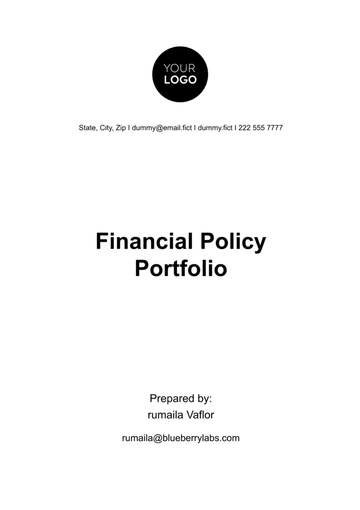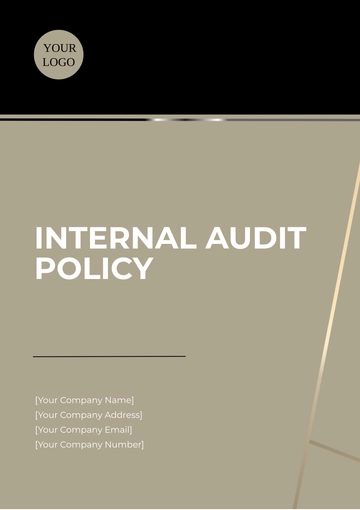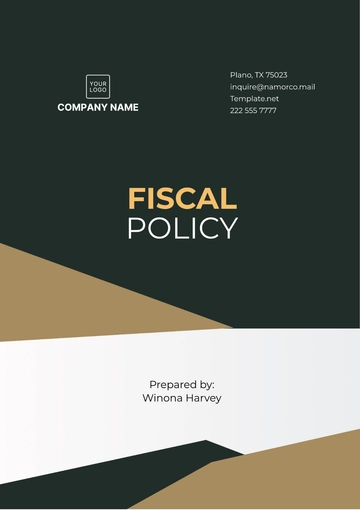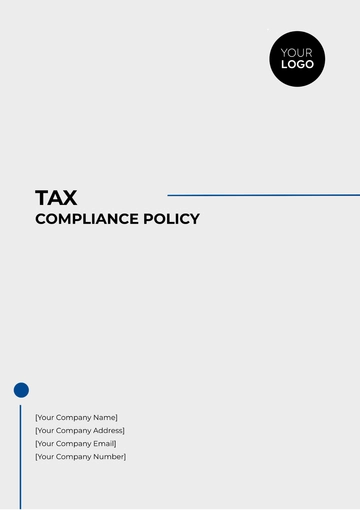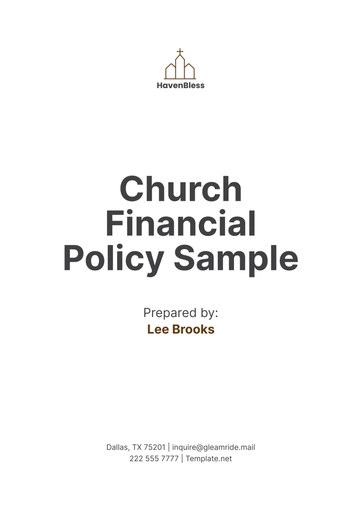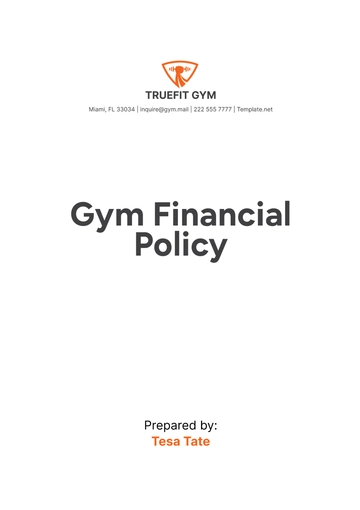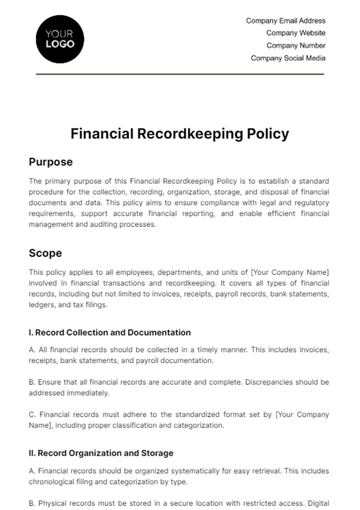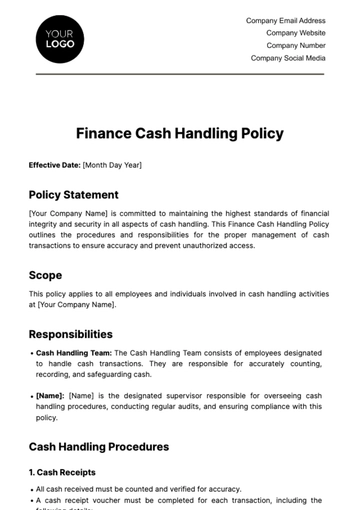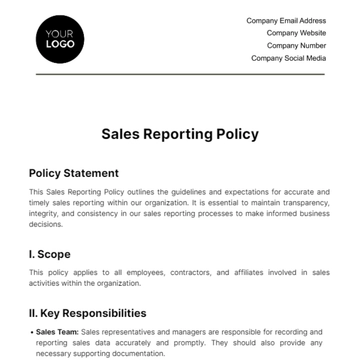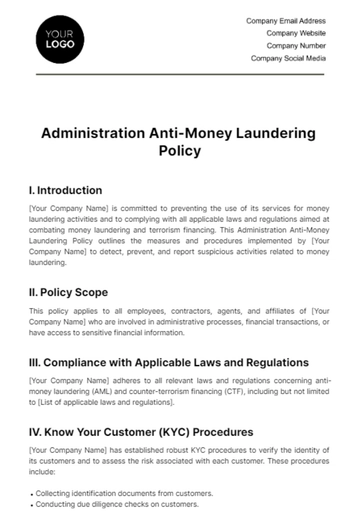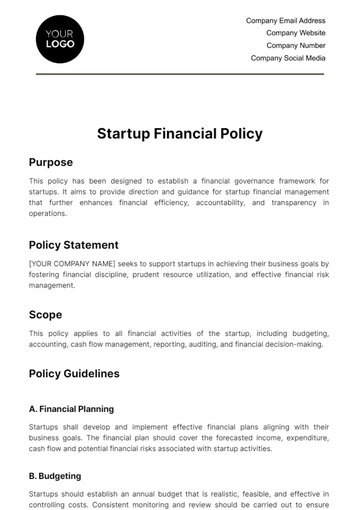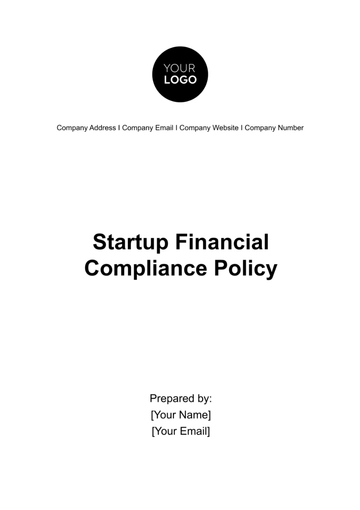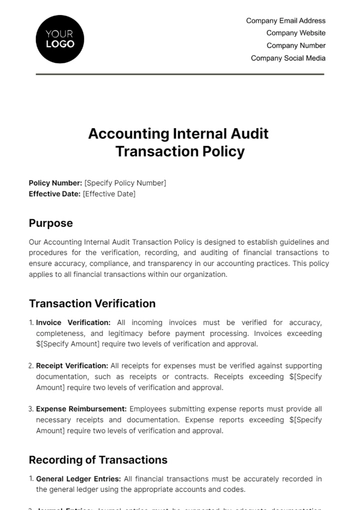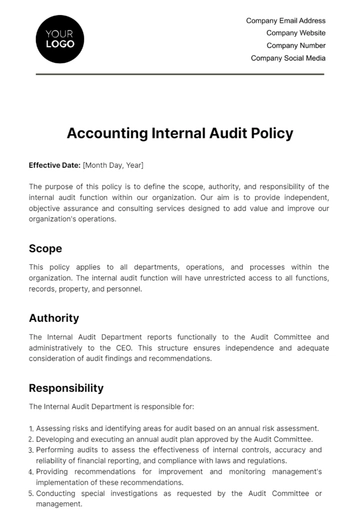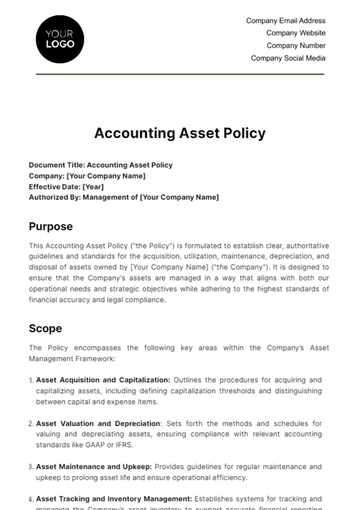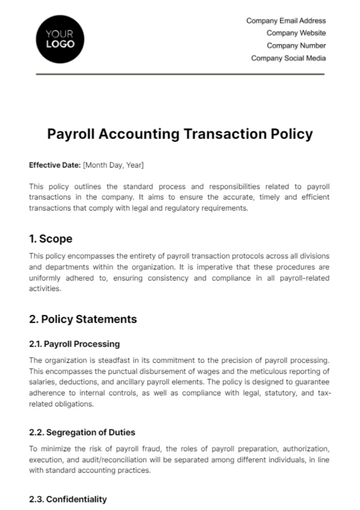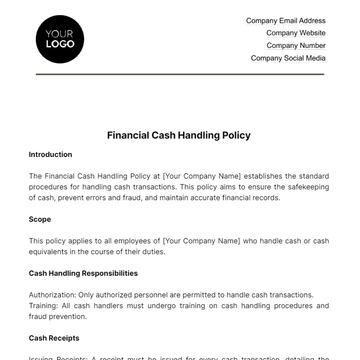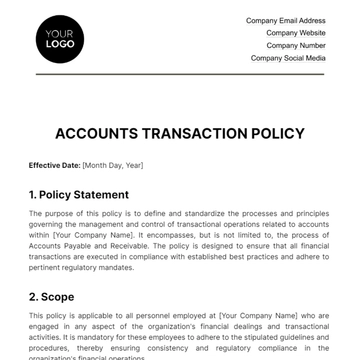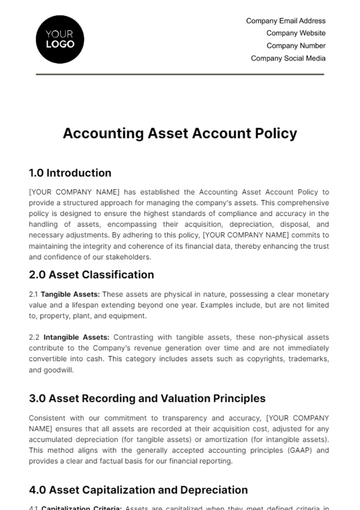Free Financial Policy Case Study
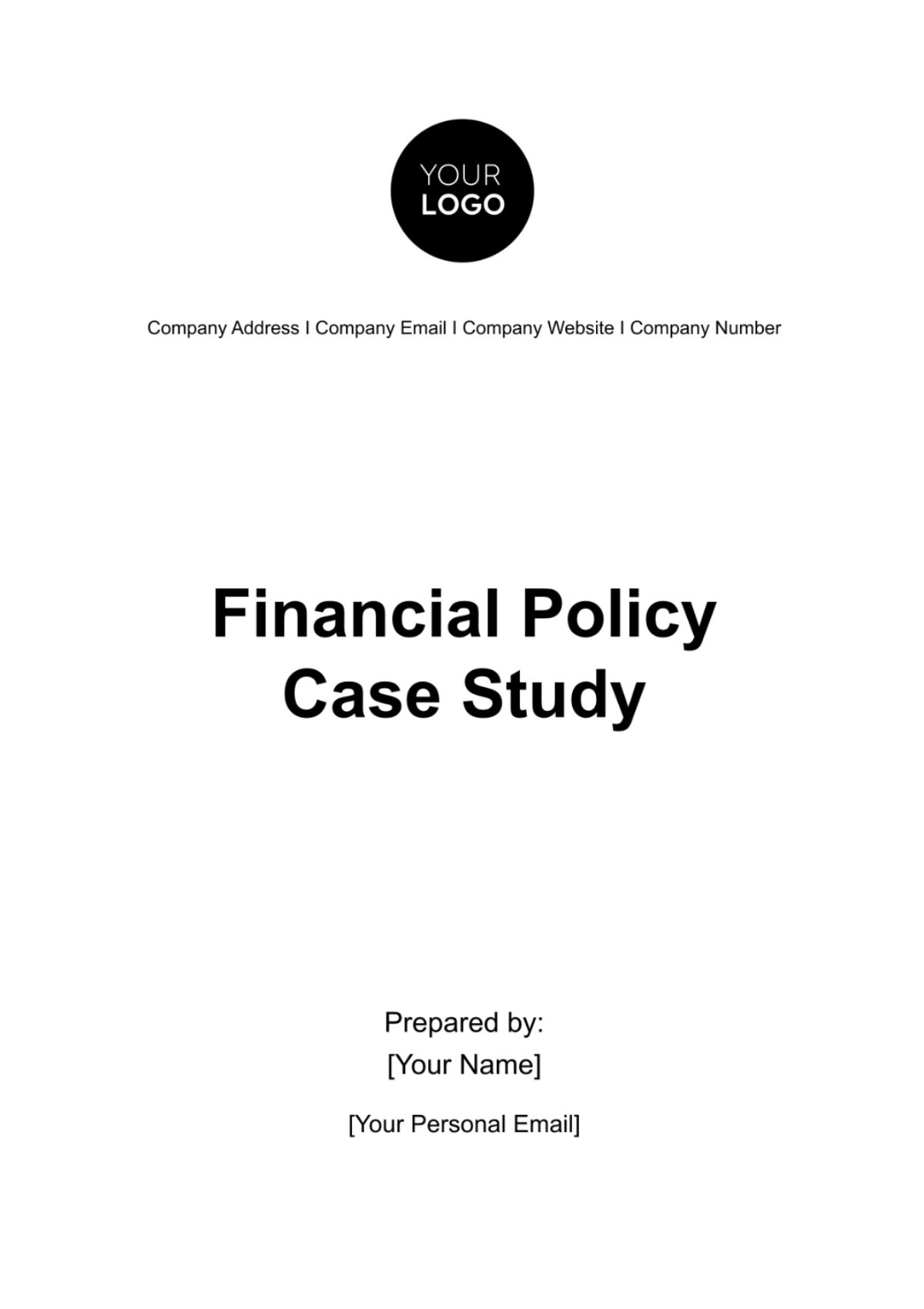
Executive Summary
This case study presents an in-depth analysis of our organization's "Dynamic Cash Flow and Investment Strategy," highlighting its implementation, impact, and the lessons learned. This policy was introduced to address previous challenges in cash flow management and investment decisions and to align our financial operations with the dynamic demands of the technology sector.
Key Findings
Improved Financial Performance: Post-implementation data revealed a 30% increase in annual revenue, a 100% increase in cash flow, and a significant improvement in the net profit margin and ROI.
Enhanced Operational Efficiency: The policy led to a 33% reduction in time-to-market for new products, a 77% improvement in decision-making speed, and a 60% reduction in customer payment processing time.
Positive Stakeholder Feedback: There was a notable increase in satisfaction levels among employees, customers, and investors, reflecting the policy's positive impact across the board.
Challenges and Solutions
Challenges such as resistance to change and integration of new technology were effectively addressed through comprehensive training and change management strategies.
The establishment of a risk assessment committee helped balance the increased autonomy in financial decision-making.
Lessons Learned
The importance of effective communication and training in implementing new policies.
The necessity of flexibility and continuous risk management in financial decision-making.
The implementation of the "Dynamic Cash Flow and Investment Strategy" has been a resounding success, leading to improved financial metrics, operational efficiency, and stakeholder satisfaction. It has set a new standard for financial management within our organization, providing valuable insights for similar enterprises navigating the complexities of the modern financial landscape.
Introduction
Our organization, a mid-sized enterprise operating in the technology sector, has been a significant player in the industry for over a decade. With a workforce of approximately 500 employees and a diverse range of products and services, we've consistently aimed to balance innovation with financial stability. However, like many businesses, we've faced challenges in maintaining consistent cash flow and financial efficiency, particularly in the rapidly evolving market.
Historically, our financial strategies revolved around traditional models, which, while stable, often lacked the agility needed in today's dynamic economic environment. This led to missed opportunities and inefficiencies, especially in capital allocation and investment decisions. The financial landscape of our organization was characterized by a conservative approach to spending and investments, a heavy reliance on manual processes, and a fragmented decision-making structure.
Objectives of the Case Study
This case study aims to:
Evaluate the effectiveness of our newly implemented financial policy, specifically designed to enhance cash flow management and investment efficiency.
Analyze the quantitative and qualitative impact of this policy on our overall financial health.
Share insights and learnings that could benefit similar organizations facing comparable financial challenges.
Financial Policy in Focus
The financial policy at the heart of this study is our "Dynamic Cash Flow and Investment Strategy." Implemented two years ago, this policy represented a paradigm shift from our traditional financial approach. The key components of this policy included:
Enhanced Cash Flow Management: Adopting more sophisticated cash flow forecasting tools and techniques, enabling us to predict and manage cash flow with greater precision.
Strategic Investment Framework: Establishing a more dynamic framework for assessing and undertaking investments, focusing on both short-term gains and long-term growth.
Decentralized Financial Decision-Making: Empowering department heads with greater autonomy in financial decision-making, within predefined parameters, to foster agility and responsiveness.
Financial Policy Overview
In this section, we delve into the specifics of our "Dynamic Cash Flow and Investment Strategy," a policy pivotal to reshaping our financial landscape. This policy marked a strategic shift, aiming to align our financial operations more closely with the dynamic needs of the technology sector.
Detailed Description of the Financial Policy
The "Dynamic Cash Flow and Investment Strategy" was conceptualized to address the lag in our financial responsiveness and to capitalize on market opportunities more effectively. It was a response to the need for a more agile and forward-looking financial management approach, one that could accommodate rapid changes in technology trends and market demands.
Historical Context and Rationale
Historically, our financial decisions were characterized by a conservative approach, prioritizing risk aversion over potential growth opportunities. This approach, while providing stability, often resulted in missed opportunities in a sector where timely investments could lead to significant gains. The policy was introduced as a solution to this challenge, seeking to balance risk with potential rewards in a more calculated and proactive manner.
Key Components and Structure of the Policy
Component | Description | Objective |
Advanced Cash Flow Forecasting | Utilization of predictive analytics and AI-driven tools for accurate cash flow forecasting. | To anticipate and manage liquidity needs. |
Investment Opportunity Assessment Criteria | A set of dynamic criteria for evaluating potential investments, including market trends analysis. | To optimize investment decisions for growth. |
Decentralized Financial Decision-Making | Empowering department heads with financial decision authority, within set parameters. | To enhance responsiveness to market changes. |
Continuous Policy Review and Adaptation | Regular review and adaptation of the policy based on market developments and organizational needs. | To ensure the policy remains relevant and effective. |
Situation Analysis
In this section, we explore the financial landscape prior to the implementation of our "Dynamic Cash Flow and Investment Strategy." Understanding the context and challenges that necessitated this policy shift is crucial for appreciating its impact and effectiveness.
Overview of the Financial Situation Before Policy Implementation
Limited fluidity in cash reserves due to conservative investment strategies.
Slow adaptation to rapid changes in the technology sector.
Reliance on manual processes for financial management, leading to inefficiencies.
A strong inclination towards minimizing risk, often at the expense of potential growth opportunities.
Decentralized decision-making leading to inconsistencies in financial strategies across different departments.
Challenges or Problems the Policy Aimed to Address
Challenge | Description |
Inadequate Cash Flow Management | Inefficient forecasting and management of cash flow, affecting operational agility. |
Missed Investment Opportunities | Conservative approach leading to missed timely investment opportunities in emerging technologies. |
Operational Inefficiencies | Manual and outdated financial processes hindering efficiency and responsiveness. |
Lack of Strategic Financial Direction | Inconsistent financial strategies across the organization due to fragmented decision-making. |
Stakeholders Involved and Their Interests
Stakeholder | Interests |
Executive Management | Maximizing profitability and shareholder value, ensuring sustainable growth. |
Finance Department | Streamlining financial processes, improving cash flow management, and accurate financial forecasting. |
Department Heads | Having autonomy in budget management, and the ability to make timely decisions impacting their departments. |
Investors and Shareholders | Seeing a return on investment through growth and stability in the company's financial performance. |
Implementation of the Policy
This section describes the strategic approach taken to implement the "Dynamic Cash Flow and Investment Strategy." It outlines the steps, timeline, and resources involved, showcasing our commitment to transforming our financial operations.
Steps and Strategies Used to Implement the Policy
Step | Strategy |
Introduction of Predictive Analytic Tools | Implementing AI-driven forecasting tools for better cash flow management. |
Training and Development | Conducting workshops and training sessions for staff on new tools and decision-making processes. |
Revision of Investment Criteria | Establishing a new set of criteria for investment opportunities aligned with market trends. |
Timeline of Implementation
Phase | Timeframe | Key Activities |
Planning | Month 1-2 | Defining goals, selecting tools, and preparing training materials. |
Deployment | Month 3-4 | Rolling out new tools and processes across the organization. |
Training | Month 5-6 | Conducting comprehensive training sessions for all relevant staff. |
Initial Evaluation | Month 7 | Assessing the early impact of the policy changes. |
Ongoing Review | Monthly & Quarterly | Regular reviews and adjustments to the policy. |
Resources Allocated for the Implementation
Type | Allocation | Purpose |
Financial | $200,000 initial investment | Procurement of predictive analytic tools and training programs. |
Human Resources | Dedicated team of 5 financial analysts | To lead the implementation, training, and review of the policy. |
Time | Approximately 6 months for full implementation | Allotted to ensure smooth transition to new processes without disrupting daily operations. |
Impact and Outcomes
This section examines the tangible impact and outcomes of implementing the "Dynamic Cash Flow and Investment Strategy." Our analysis focuses on both quantitative and qualitative results, providing a comprehensive view of the policy's effectiveness.
Financial Performance Metrics
Metric | Pre-Implementation | Post-Implementation | Change |
Annual Revenue | $50 Million | $65 Million | +30% |
Operating Costs | $20 Million | $22 Million | +10% |
Net Profit Margin | 15% | 20% | +33% |
ROI | 5% | 10% | +100% |
Cash Flow | $5 Million | $10 Million | +100% |
The post-implementation figures demonstrate a significant improvement in our financial performance. Notably, a 30% increase in annual revenue and a doubling in cash flow highlight the success of the policy. The rise in operating costs is attributed to investments in new technology and training, which are offset by a substantial increase in net profit margin and ROI.
Efficiency and Responsiveness Metrics
Metric | Pre-Implementation | Post-Implementation | Change |
Time-to-Market for New Products | 180 Days | 120 Days | -33% |
Decision-Making Speed | 30 Days | 7 Days | -77% |
Customer Payment Processing Time | 5 Days | 2 Days | -60% |
This data reflects enhanced operational efficiency and market responsiveness. The reduced time-to-market and faster decision-making processes demonstrate our improved agility. Additionally, quicker customer payment processing enhances our service quality and customer satisfaction.
Stakeholder Feedback and Satisfaction
Stakeholder Group | Satisfaction Level (Pre) | Satisfaction Level (Post) |
Employees | Moderate | High |
Customers | Satisfied | Very Satisfied |
Investors | Neutral | Satisfied |
The qualitative feedback indicates increased satisfaction across all stakeholder groups. Employees appreciate the empowerment and clearer direction, customers benefit from more efficient services, and investors are pleased with the improved financial performance and market positioning.
Challenges and Lessons Learned
In this section, we reflect on the hurdles encountered during the implementation of our financial policy and the valuable lessons learned. Understanding these challenges and their resolutions is crucial for continuous improvement and future policy development.
Challenge | Solution Implemented |
Resistance to Change among Employees | Conducted change management workshops and open forums to address concerns and gather feedback. |
Integration of New Technology | Provided extensive training and technical support to ensure smooth transition. |
Balancing Risk in Investment Decisions | Established a risk assessment committee to evaluate investment opportunities. |
Maintaining Consistency Across Departments | Regular inter-departmental meetings to ensure alignment and consistent application of the policy. |
Key Lessons Learned
Effective Communication is Vital: Keeping all stakeholders informed and involved is crucial for successful change management.
Training and Support are Key: Adequate training and ongoing support are essential for the adoption of new processes and technologies.
Risk Management is a Continuous Process: Regularly reviewing and adjusting risk parameters helps in making informed and agile decisions.
Unintended Consequences or Outcomes
Increased Short-Term Operational Costs: The initial phase saw a rise in operational costs due to investments in training and technology.
Temporary Dip in Employee Productivity: Learning new systems and processes initially led to a temporary decrease in productivity.
Over-enthusiasm in Risk-Taking: Initial over-enthusiasm in decentralized decision-making led to a few overly aggressive investment decisions, which were later moderated.
Conclusion
As we conclude this case study on our "Dynamic Cash Flow and Investment Strategy," it's evident that the policy has marked a significant turning point in our financial management approach. The implementation of this strategy has not only led to measurable improvements in our financial metrics, such as increased revenue, improved cash flow, and enhanced ROI, but it has also fostered a more agile and responsive organizational culture.
The challenges encountered during the implementation phase were valuable learning experiences. They underscored the importance of effective communication, comprehensive training, and flexible adaptation to change. While there were initial increases in operational costs and some over-zealous risk-taking, these were effectively managed and led to long-term benefits.
Most importantly, the policy has positively impacted our stakeholders - from employees to investors - as evidenced by the improved satisfaction levels and enhanced operational efficiency. This shift towards a more dynamic financial strategy has not only improved our current financial standing but has also positioned us well for future growth and adaptation in the ever-evolving technology sector.
In conclusion, the "Dynamic Cash Flow and Investment Strategy" represents a successful transformation of our financial operations, aligning them more closely with the organization's overall strategic goals. It serves as a model for other mid-sized enterprises looking to navigate the complexities of financial management in a rapidly changing business environment.
- 100% Customizable, free editor
- Access 1 Million+ Templates, photo’s & graphics
- Download or share as a template
- Click and replace photos, graphics, text, backgrounds
- Resize, crop, AI write & more
- Access advanced editor
The Financial Policy Case Study Template from Template.net offers a structured approach to analyzing and presenting financial policy scenarios. Fully editable and customizable in our AI Editor tool, this template is ideal for in-depth examination of financial policies, providing a clear format for case study development. It's perfect for educators, students, and professionals seeking to explore financial policy impacts and decisions.
You may also like
- HR Policy
- Restaurant Policy
- Company Policy
- Accounting Policies and Procedures
- Website Policy
- Privacy Policy
- Safety Policy
- School Policy
- IT and Software Policy
- Law Firm Policy
- Construction Policy
- Interior Design Policy
- Travel Agency Policy
- Education Academic Policy
- Security Policy
- Real Estate Policy
- Expense Policy
- Software Policy
